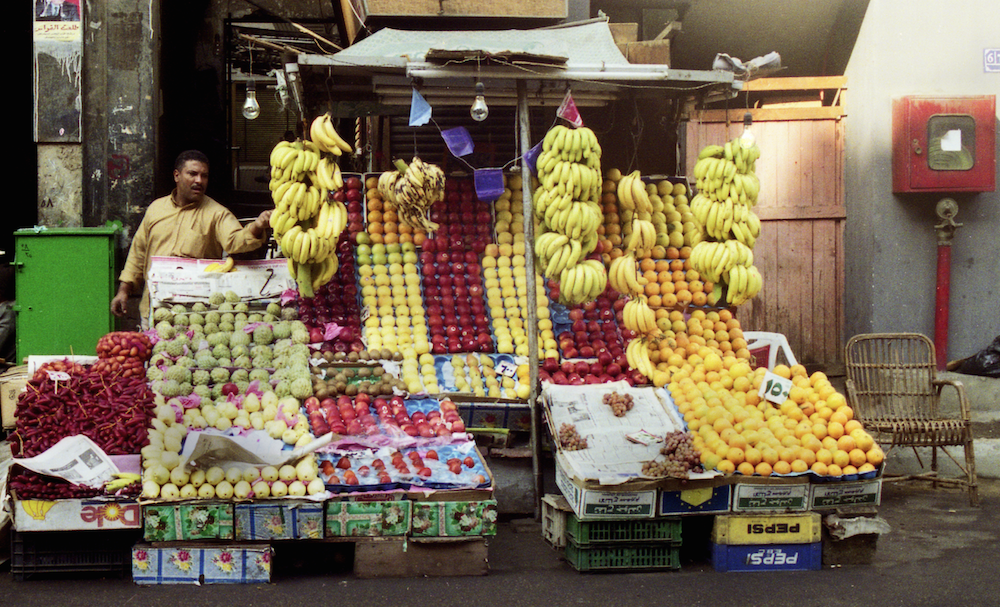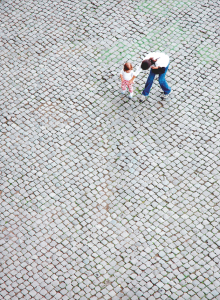
Taken from The Perfect Photo: 71 Tips from the Top, by Elin Rantakrans and Tobias Hagberg
A photograph is a reflection of reality, or, to be more exact, a reflection of a part of reality. The composition of a photograph—or the selection of this piece of reality—is fundamental to a photo’s effect.
It is helpful to consider the following tips when composing an image:
- Pay Attention to Where Specific Elements are Placed: A large part of the composition rests on the placement of specific elements in your picture. Many photographers use the rule of thirds for this, whereby the picture’s frame is divided into three imaginary columns and three rows, creating nine equal squares. If your subject is in one of these areas or at an intersection of the lines, it can help to bring special attention to it. No one rule of thumb applies to every situation, though, so there’s only one way to find out what works and what doesn’t: take lots of pictures.
- Take Advantage of Patterns and Colors: Sometimes the difference between a picture that works and one that doesn’t is an intriguing pattern or structure. The subject itself can be simple, such as peeling paint on a rough stone wall, contrasting colors, or a single detail that stands out and breaks up the rhythm of the picture (see Image One).

Image One
- Consider the Details: A small detail can say a lot. If you take a photo of the entire facade of a house, the charm of the house can get lost, but sometimes a unique detail can speak for the whole building. Pay attention to what’s underfoot; get close to your subject and focus on what you really want your picture to express. Less is more.
- Emphasize What Counts: If you want to highlight a particular detail in a photo, place it toward the front of the composition or emphasize it with lighting. For example, if you take a photo of a man standing directly in front of the Parthenon, he will appear quite small in relation to the structure. This kind of photo demonstrates the immensity of the site. But, if you want the man to appear more important than the structure, it’s better to place him closer to the camera so the Parthenon will function as a backdrop rather than the main feature
- Study Photographs Taken by Other Photographers: Familiar tourist attractions have been photographed time and time again, so it’s easy to learn from others. When you’d like to photograph these same subjects, allow the thousands of pictures in books and postcards to inspire you. Studying the photographs of others is a great way to get started, if for no other reason than to avoid making the same mistakes. To define your own voice as a photographer, it’s a good idea to consider what you find pleasing in an image and what you don’t.
- Tell a Story: Photographs can take on new meanings when they are included as part of a series documenting the same subject from different perspectives. Each image on its own may not say much, but together they tell a story. Get close to your subject and explore it by changing perspectives. It’s important to have an idea of the kind of story you want your images to tell.
- Try Different Perspectives: Lines of sight give two-dimensional pictures perspective and depth. Photographing from eye level establishes a descending shot that is the least obtrusive but can become boring. Looking down on a subject from a bird’s eye perspective diminishes the subject, and looking up from below makes it appear more impressive. The right perspective is always important when photographing buildings and cityscapes. In order to give your architectural shots depth, you can stand at a slight angle from a building rather than right in front of it. (see Image two)

Image Two
Want to learn more? Read The Perfect Photo by Elin Rantakrans / Tobias Hagberg. Available in eBook form here.
